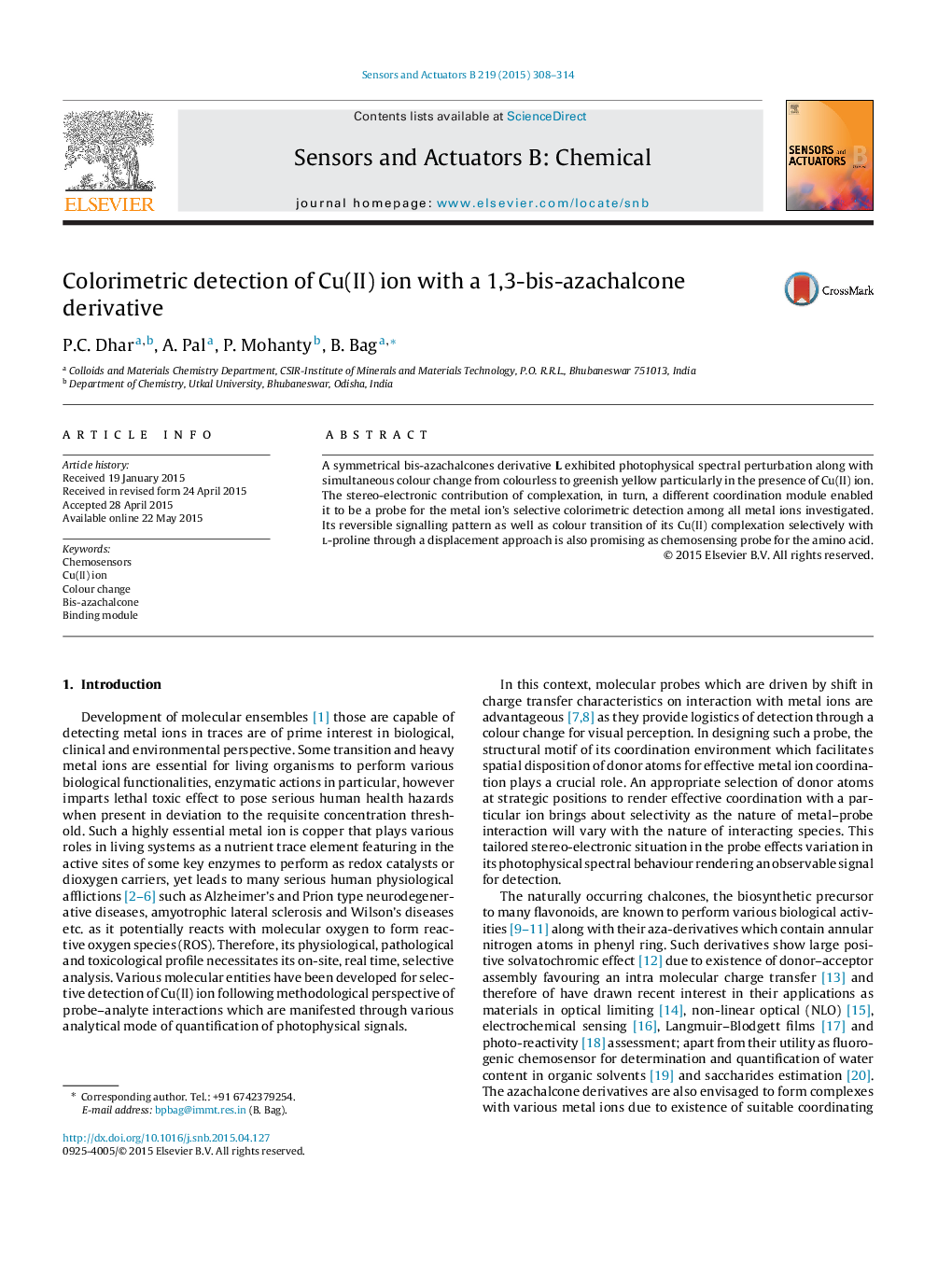| Article ID | Journal | Published Year | Pages | File Type |
|---|---|---|---|---|
| 741629 | Sensors and Actuators B: Chemical | 2015 | 7 Pages |
•The bis-azachalcone derivative exhibited a ‘turn-on’ signalling response selectively with Cu(II) ion.•The detection of Cu(II) as a function of colour change is visually perceived.•The favourable stereo-electronic environment for Cu(II) coordination to L owe to binding mode.•The Cu(II)–probe complex selectively detect l-proline through a displacement approach.
A symmetrical bis-azachalcones derivative L exhibited photophysical spectral perturbation along with simultaneous colour change from colourless to greenish yellow particularly in the presence of Cu(II) ion. The stereo-electronic contribution of complexation, in turn, a different coordination module enabled it to be a probe for the metal ion's selective colorimetric detection among all metal ions investigated. Its reversible signalling pattern as well as colour transition of its Cu(II) complexation selectively with l-proline through a displacement approach is also promising as chemosensing probe for the amino acid.
Graphical abstractThe bis-(azachalcone) derivative L detects Cu(II) ion among other metal ions as a function of colour change, owe to different binding module.Figure optionsDownload full-size imageDownload as PowerPoint slide
